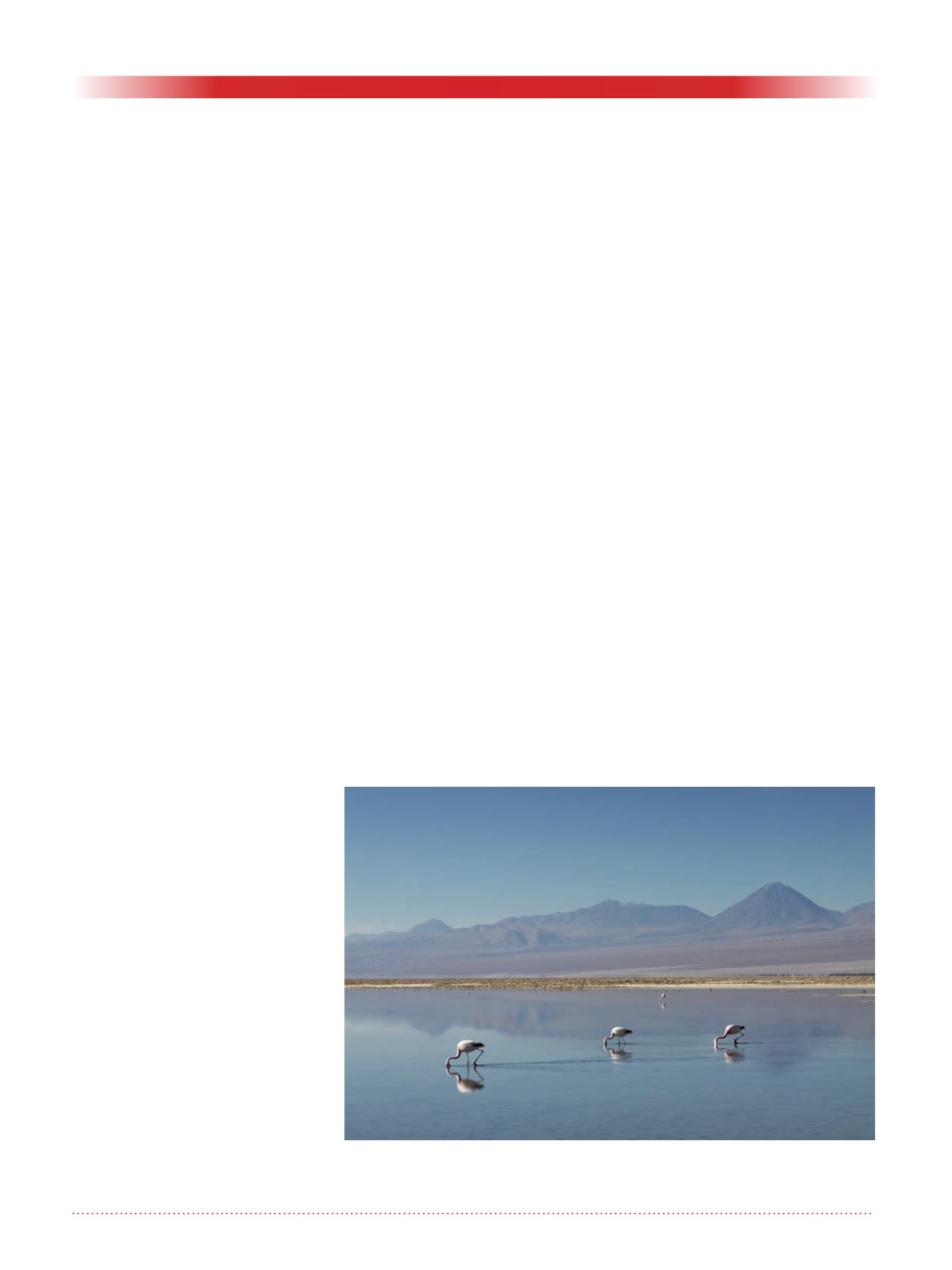
44
Geotechnical News •March 2015
WASTE GEOTECHNICS
mines located in the southern part of
the country may be subject to annual
rainfalls of over two meters, a large
portion of mines are concentrated in
the north, which is extremely arid. In
the Atacama Desert, which occupies
much of the northern territory, average
annual precipitation can be less than 2
mm, while potential evaporation soars.
Sites of such extreme aridity can bring
unexpected benefits for closure design.
At least in theory, small quantities of
contact water can potentially elimi-
nate or dramatically reduce acid rock
drainage (ARD), by the reduction or
elimination of one of the three ele-
ments needed for its generation (the
others being oxygen and a waste with
the potential to generate ARD).
At some sites, contact water quanti-
ties are so small in comparison with
evaporation rates, that a strong case
can be made to eliminate many com-
mon control measures. Unfortunately
for the engineer, the closure design is
rarely so simple. Many of the arid sites
are subject to occasional, but sig-
nificant, rainfall or snowmelt events.
Due to limited data, it can be difficult
or impossible to characterize to an
adequate confidence level what is the
“real” 1-in-100 year or 1-in-1000 year
event. To dimension the difficulty,
consider that having 90% confidence
in just a 25 year storm requires 59
years of precipitation data – a quan-
tity of data that would be considered
excellent for many sites in Chile. The
difficulty in correctly estimating the
intensity of the low frequency storm
events results in a number of design
challenges. Water diversion structures
that have been sized based on con-
ventional precipitation estimates can
result in the construction of immense
structures in the desert that will remain
dry for years or decades – or possibly
even in perpetuity, given the uncer-
tainties in the estimation of the design
storms. On the other hand, there is
little expectation that more innovative
(and potentially more realistic) esti-
mates will be accepted by the approv-
ing authorities.
In theory, potentially acid generating
waste rock could sit with oxidation
products developing on the surface of
the rock for years, and these products
would then be flushed by the storm
event. Adequately characterizing the
risks associated with such events
ideally requires consideration of a
range of issues, including statistically
defined water balances, reaction rates,
and dilution potentials. Receptors
must also be figured in the equation.
Many sites benefit from their extreme
remoteness from inhabited areas.
Groundwater resources are often iso-
lated as well, with water table depths
below ground surface of 90 meters
or more, protected in varying degrees
by bedrock, dense desert soils, and a
powerful evaporative regime. On the
other hand, unique and sometimes
fragile desert environments may come
into play. A common and particularly
sensitive case is the salar environment,
where all discharges from a watershed
drain to an isolated internal evapora-
tion point, the salar. These discharge
points are delicate ecosystems, home
to a variety of species including the
famous flamingos, or the deer-like
vicuñas (see Photo 2).
Even where ARD issues are not a
concern, the aridity can create other
issues, particularly the generation of
dust. Waste rock dumps tend to be
relatively immune to this problem,
at least in the long term. The range
of grain sizes present in a waste rock
dump can be expected to provide con-
siderable protection form the ongoing
generation of dust through the forma-
tion of a “desert pavement”, a process
in which finer particles are scoured
away by the wind, leaving a resistant
surface of the particles too large to be
moved.
On the other hand, the closure of any
tailings facility requires a site-specific
evaluation of dust generation post-
closure. Due to the relatively fine
and uniform size of many tailings,
they may generate nuisance dust for
decades or even hundreds of years
after closure. While to a foreigner the
concern of Chilean regulators over
dust generation may seem exagger-
ated, a quick visit to Chañaral, a
coastal town located approximately
800 km north of Santiago can provide
some rapid context. Historic marine
disposal of tailings in the bay just
north of this community has resulted
Photo 2. A typical salar environment. (
/
by-sa/3.0/deed.en).


